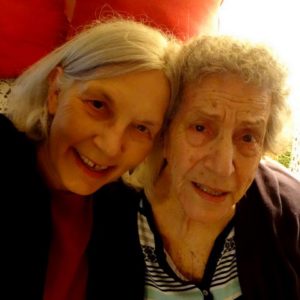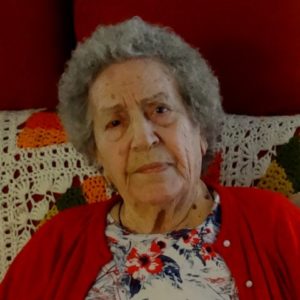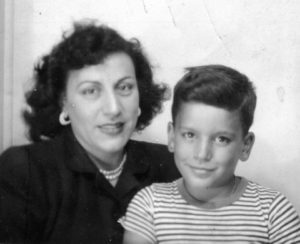(This article follows information about the PATH or Palliative Approach to Health found in “Why It Helps to Understand Palliative Care Options before We’re Sick.)

I wasn’t surprised my mother-in-law Virginia wasn’t eligible to be a hospice patient despite her age (101), blindness, and frequent falls. She had no life-limiting diagnosis and no weight loss. She still enjoyed pancakes and pasta. Even though she wasn’t accepted as a patient, the Hospicare nurse who did the evaluation had a reassuring conversation with Virginia’s main health aide and me about managing Virginia’s symptoms.
We also registered Virginia in PATH (Palliative Approach to Health). The nurse who evaluated her promised to assist when needed. Now I had someone to call when we needed help.
when needed. Now I had someone to call when we needed help.
A few months later, Virginia experienced shortness of breath. Her (privately hired) health aide called Virginia’s doctor who recommended the ER. After eight hours of exhausting tests, they found amazing health for a woman of 101. Strong regular heart, lungs with a little extra fluid, memory loss but alert, nothing life-threatening.
The cause of the breathing problem? Probably anxiety.
Our PATH nurse came for a second Palliative Care consultation after that day in the hospital. She recommended that Virginia try a medicine that the doctor had already prescribed before taking Virginia to the ER. She also recommended we ask the doctor for a community Visiting Nurse so we had more help monitoring Virginia’s health.
Because of these PATH recommendations, the doctor ordered a weekly visiting nurse. Because of our discussions with the Palliative Care team, everyone involved had shared goals: No hospitals. No unnecessary medical tests. Make Virginia comfortable and happy. Cook pasta.
After the visiting community nurse joined our team, things were quiet for a few months, but in time Virginia had a new breathing problem. The palliative care nurse returned to re-evaluate and because of shortness of breath and other cardiac symptoms, Virginia became a hospice patient.
Because the nurse already knew Virginia and her health information, the transition to hospice was seamless. Within days, we had a social worker, spiritual care coordinator, hospice aides as needed, a weekly visit from the hospice nurse, and a volunteer who brought Italian pastry and spoke Italian, Virginia’s childhood language.
With all this loving support, Virginia’s lungs cleared. It’s true. Becoming a hospice patient prolongs life. I knew Virginia would remain on service for three months before the next evaluation. During those months, I grappled with the long-term issues of Virginia’s life, things that felt too difficult to face on my own. Information and support poured in.
Could we eliminate some of the medication that had accumulated over the years? Was it helping her or making her sicker? Conferring with Virginia’s doctor, the hospice nurse lowered her prescription drug load. Her breathing improved.
Was it good to keep her in her apartment or should I move her while she still had a little money left for private pay at a nursing home of our choice? When should I apply for Medicaid?
 Should I try to re-connect Virginia with her religious roots because I hoped it would comfort her and help her accept her son’s death? After his death ten years ago, she had refused to see a priest because she was angry that her faith hadn’t protected her from loss.
Should I try to re-connect Virginia with her religious roots because I hoped it would comfort her and help her accept her son’s death? After his death ten years ago, she had refused to see a priest because she was angry that her faith hadn’t protected her from loss.
Should I talk to Virginia more about her son’s death to make sure she wasn’t waiting for him to say goodbye? Or should we avoid discussing this because it upset her?
How about me? I was exhausted with caregiving. Hospicare considered my needs along with Virginia’s. They watched out for me, too.
We had decisions to make. We were depleting Virginia’s savings to pay for 24-hour health aides. We needed a long-term plan. With the support of a terrific social worker and nurse, information flowed in. My sons and I discussed what to do now that Virginia seemed to be getting stronger even though she would always need 24-hour care. We needed to protect her and also protect me. Hospice held our hand every step of the way.
In a later article, I’ll let you know what changes we made and how our situation unfolded.
***

Bio: Elaine Mansfield’s book Bio: Elaine Mansfield’s book Leaning into Love: A Spiritual Journey through Grief won the 2015 Independent Publishers Book Award Gold Medal for Aging, Death, and Dying. Her TEDx talk is “Good Grief! What I Learned from Loss.” Elaine gives presentations and workshops and has been a Hospicare volunteer since 2009 in a variety of roles. You’ll find her blog at https://elainemansfield.com/blog/. For more information about Elaine’s work, see her website.